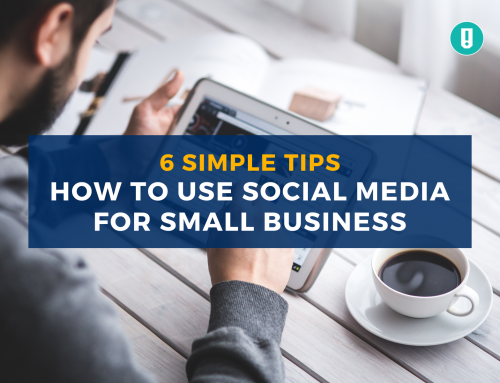The perfect customer has hit your site.
They’ve cruised effortlessly from the home page to a product listing, and they’re one step away from sealing the deal at checkout.
Then *poof* they’re gone…
Struggling to understand what happened? Us too. Despite staggering shopping cart abandonment statistics ($4 trillion worth of merchandise was abandoned in online shopping carts in 2015) it’s still surprising when a seemingly hot lead bails out on their purchase at the last minute. That’s why we’ve come up with several easy ways to quell your fear of (shopping cart) abandonment and get more sales by improving your conversion rate.
The Backstory
Before you can reduce your shopping cart abandonment rate, we must look at why a customer would leave. There are many reasons, ranging from being presented with unexpected costs to “just browsing” mentality.
Fortunately, there are tons of tactics to minimize these factors like email marketing, website optimization and live chat just to name a few. If all goes well, those independent efforts will improve your conversion rate.
“In e-commerce, every decision you make impacts the rate at which your visitors convert to purchase.”
What is a Conversion Rate?
First, let’s nail down what a “conversion rate” actually refers to, so we know what we’re looking for. Bigcommerce describes conversion rate as “the number of people who come to your website and ‘convert’ by taking whatever desired action you want for them to take.” So, if the aim is for them to make a purchase, then those who purchased, “converted.” If the aim is a signup, then those who signed up converted.
What does this have to do with e-commerce?
The lower your conversion rate, the less revenue you’ll bring in. Picture this example:
You’re selling hats in an e-commerce store. A 0% conversion rate means no one who visits your website buys any of the products you’re offering. If 1000 people visit the site, and only 10 purchase, then your conversion rate = 10/1000, which is 0.01, or 1%. If 100 people visit the site, and 10 purchase, then your conversion rate is 10%.
The 10% definitely sounds better, right? Let’s explore the elements behind that, and how to get closer to this.
“Conversion rate gets more useful as you break it down by different types of visitors with different intent and a different relationship with the retailer.”
Refine Your Target Market
Know your audience so you know how to market to them. Look at every potential use of your product in order to become more familiar with each segment of your market. This will ensure you start out on the right path as you fine tune conversions. If something is off down the line, come back to make sure you have target market nailed, so you can be sure you’re speaking to them and their needs.
Become a Google Analytics Pro
Make it your friend. There are other tools your business can use, but if you master this nearly universal asset, you have accomplished a critical step. You’ll be able to really focus on certain characteristics of visitors and attempt to identify a common theme. Once you can identify a common theme, your marketing efforts can be more successful.
Click Here for a guide on getting started with (or touching up on) Google Analytics.
Have an Exit Strategy
There must be a plan for when the customer decides to navigate away from the page, especially one in which they are potentially making a purchase. Exit popups (overlays that activate in the same window the user was browsing on) can help to save conversions. It presents an otherwise lost customer with one simple, easy to digest offer. Less distractions will allow a prospect to fully understand an offer and make an informed decision on whether or not to move forward. Visitor may leave your site for a variety of reasons, but “25% of abandoning web users cite complicated web design.” Narrow the focus of your offer and give yourself a chance to bring that customer back.
However, don’t use this strategy as a mousetrap; it should still be easy to close. The message should be loud and clear (whether a discount, etc.), so that the customer knows the intent, but also easy to say no to. They may come back at a certain point. If it is something that takes too much effort to close, there could be a sense of resentment.
Stay on Top of the Trends
Make sure you keep an eye on overarching trends like how your audience is shopping. Is it via a desktop or a tablet? What products are purchased most often by customers browsing on their smartphones? According to Statista, “3.38% of e-commerce website visits via tablet device were converted into purchases”. Knowing ongoing trends will allow you to have the right focus when it comes to your store.
“With shoppers increasingly using a smartphone or tablet to purchase, it’s vital for online retailers to know the effectiveness of trading via these platforms.”
Test Away
Test everything. Testing should be ongoing, in order to continue site improvement. If you want to know what’s working, what’s not working, and what is a horrendous poison to your conversion efforts, you must continue to test. Justin Rondeau put it best: “Testing without analytics is like a sandwich without bread, it’s messy and ultimately unsatisfying.”
“No matter how ‘good’ your conversion rate is, you can always make improvements, which will boost your bottom line.”
Walk in Your Customer’s Shoes
Go through your store from the eyes of a customer. If the experience is less than optimal, annoying, or can be described with another undesirable adjective, then there is still more work to do. You can really knock it out of the park with your conversion rate, but to do so, you must ABO – Always Be Optimizing. Figure out how you can do better. Would something like live chat software enable engagement opportunities during the checkout stage? An in-depth analysis will do wonders, for both you and your customer!







Leave A Comment